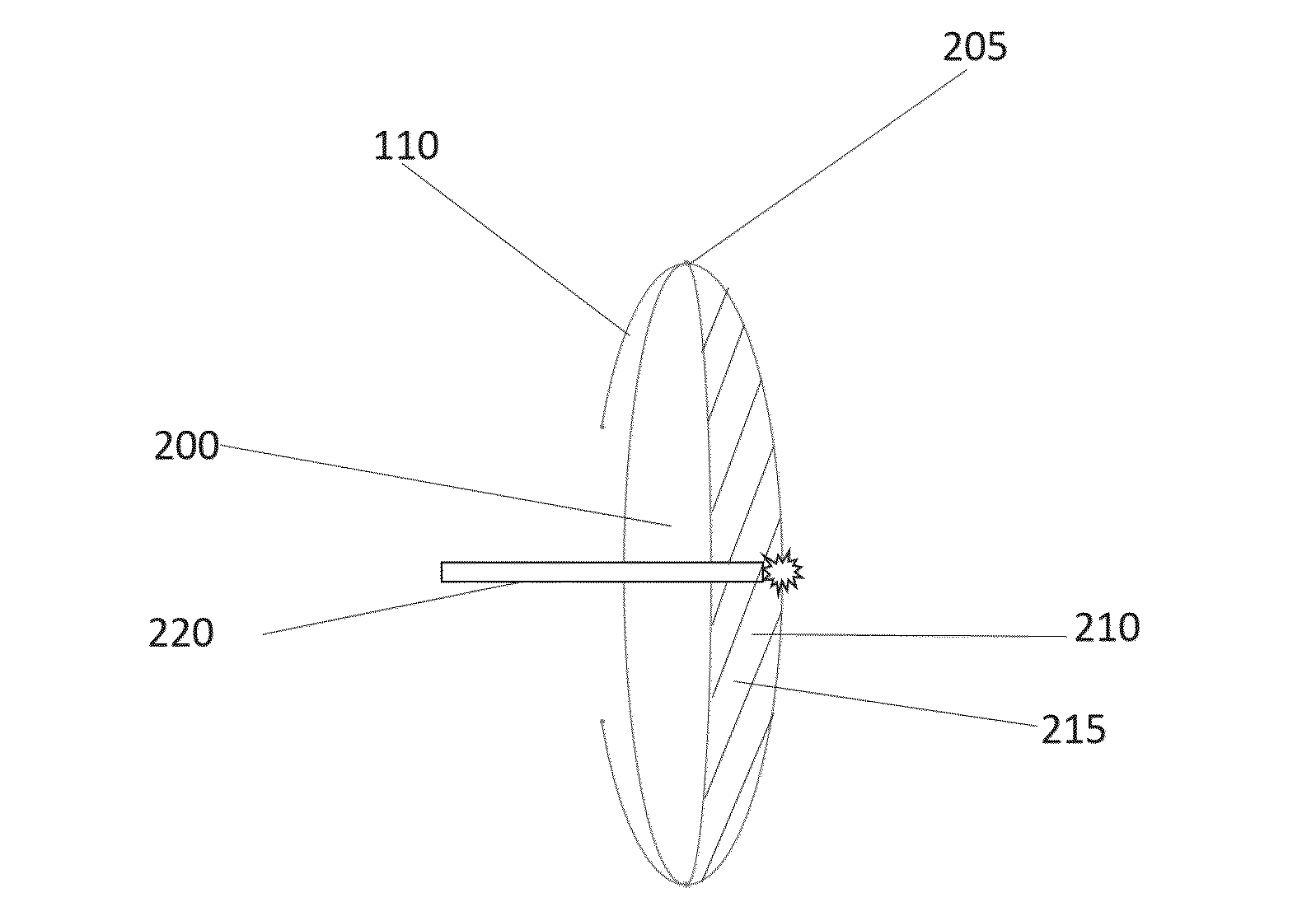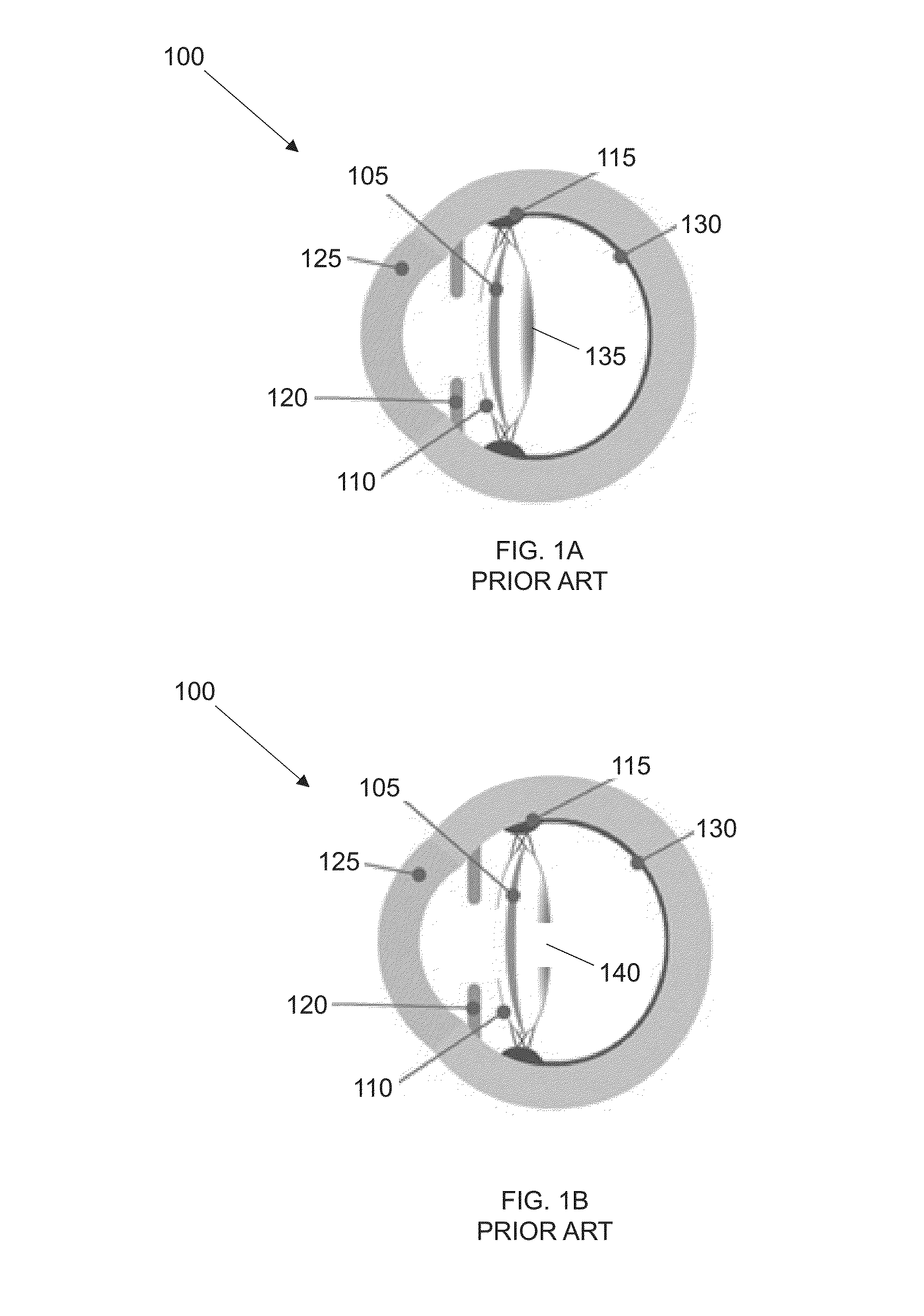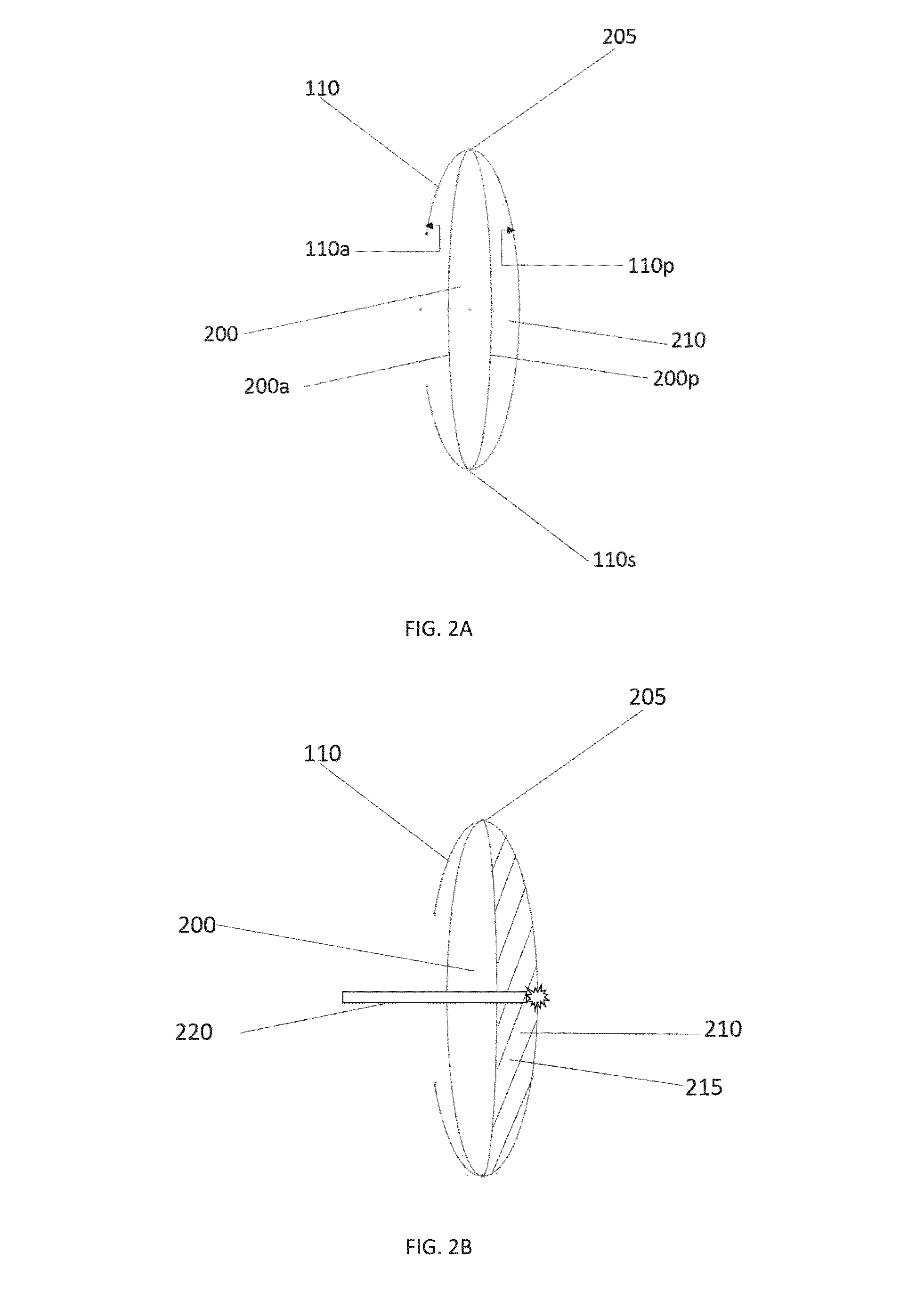Systems, intraocular lenses, and methods for treatment of posterior capsule opacification
a technology of intraocular lenses and opacification, which is applied in the field of intraocular lens designs and methods of treatment for posterior capsule opacification, can solve the problems of reduced visual acuity, decreased visual acuity, poor visual acuity at close distances, etc., and achieves the effect of preventing or substantially eliminating damage to iols and more robustly resisting damage from pco treatments
- Summary
- Abstract
- Description
- Claims
- Application Information
AI Technical Summary
Benefits of technology
Problems solved by technology
Method used
Image
Examples
Embodiment Construction
[0047]Embodiments of the present invention feature PCO treatments in which the IOL and the posterior lens capsule are spaced apart prior to removing the posterior lens capsule. Refer to FIG. 2A, which depicts a conformally fitting IOL 200 implanted in a lens capsule 110. As shown, the lens capsule 110 has an anterior surface 110a, a posterior surface 110p, and a peripheral surface 110s between anterior surface 110a and posterior surface 110p. IOL 200 has an anterior optical surface 200a facing the anterior surface 110a of the lens capsule 110, a posterior optical surface 200p facing the posterior surface 110p of the lens capsule 110, and a peripheral sealing portion 205 disposed between the anterior optical surface 200a and the posterior optical surface 200p. Due to the conformal fit of the lens, the peripheral sealing portion 205 of the IOL 200 sealingly contacts (i.e., interfaces with) lens capsule 110 (e.g., the peripheral surface 110s), thereby creating a compartment 210 that is...
PUM
 Login to View More
Login to View More Abstract
Description
Claims
Application Information
 Login to View More
Login to View More - R&D
- Intellectual Property
- Life Sciences
- Materials
- Tech Scout
- Unparalleled Data Quality
- Higher Quality Content
- 60% Fewer Hallucinations
Browse by: Latest US Patents, China's latest patents, Technical Efficacy Thesaurus, Application Domain, Technology Topic, Popular Technical Reports.
© 2025 PatSnap. All rights reserved.Legal|Privacy policy|Modern Slavery Act Transparency Statement|Sitemap|About US| Contact US: help@patsnap.com



